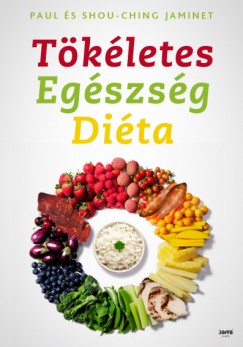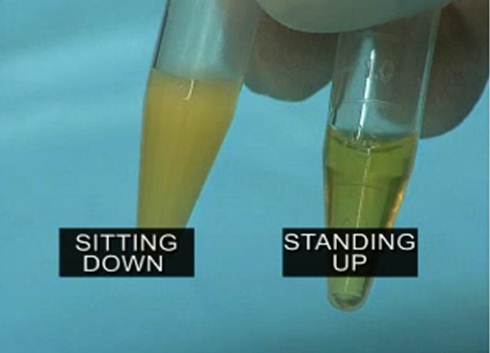The Hungarian edition of Perfect Health Diet is on sale! Jaffa Kiadó is the publisher, it can be purchased here, and this is the cover:
Peter Lakatos gets most of the credit for making the Hungarian edition happen. In addition to being a PHD fan, Peter is a StrongFirst Girya Master Instructor with Pavel Tsatsouline, Expert 2 Krav Maga instructor with Eyal Yanilov, blue belt Brazilian jiu jitsu practicioner with Carlson Gracie Jr., and a creator of Primal Move. Peter was born and lives in Budapest, Hungary.
Here are Peter’s tips for better movement.
Move More, but for the Right Reasons
Most training systems tell you to move more to become slimmer. And when you stop being slim, they ask you to move more. This advice is misdirected. Movement should not be thought of as a tool for creating a caloric deficit. Rather, movement should be regarded as a means to better health. Movement can make you slimmer, but only as a side effect of making you healthier.
If you move only to lose weight, and rely on movement for weight loss, you are in trouble. As David Whitley would say: you can’t out-train a doughnut.
The goal of movement should be better health and a more capable body. Movement reshapes your brain and makes you mentally, emotionally, and physically ready for almost any challenge.
We designed Primal Move to help people achieve this positive reshaping of brain and body. Here is a video which introduces Primal Move:
We noticed early on while creating Primal Move that we can easily get our students to move more or more intensely: all we had to do was add games. Games and play are seriously underrated in physical education. Today, we often see kids suffering from play deprivation. Yes, you read that correctly; I am not talking about sleep deprivation, but play deprivation.
Stuart M. Brown, whom we consider to be the world’s number one expert on play, studied several serial killers and found a shocking common pattern in their lives – they all had been deprived of play. According to Dr Brown, play deprivation can cause many cognitive disorders, and lack of play implies a lack of social skills. That does not mean that those who don’t play will become serial killers. But maybe they won’t become Mother Theresa either!
Improve Your Movement Quality
Moving better is where all things start. Now, better is of course hard to measure, but simply said – when things are getting easier you just learned how to make a certain movement more efficient. Moving better means moving with better coordination, better control, less mental, emotional and sometimes physical tension. Moving better means we have full access to the human body, and give us a great foundation for the next step, becaming stronger.
We created a full division in Primal Move focused on moving better, called the Fundamentals. Our Fundamentals division is based on the Functional Movement System of Gray Cook and Lee Burton, and we truly recommend visiting their website, FunctionalMovement.com. Want to be super clever on human movements? Read Gray’s book, The Movement.
In Primal Move Fundamentals, we start and finish with a short but very valuable evaluation called the Primal Flow Evaluation. Yes, we want to know how well you move before we try to make you stronger or more fit.
We really believe the movement hierarchy should be based on the quality of movement. Establishing quality of movement first prepares you to load the movements with weight, repetition or speed. But don’t think you have to move like a ballet dancer. Just move well enough, so that additional strength will not distort your structure.
Now better movement gives a great feeling. Moving better and more fluidly builds your confidence. Can you remember a time when movement was painful – when you moved to play or even simply to take a book off the shelf, and knew before you did it that, “This is going to hurt,” and so you flinched and slowed your movement down. Maybe even just thinking about the movement made you stressed.
Moving better not only means you move well, but also that you learn movements faster because your movement literacy – the term was coined by Istvan Balyi, the famous Hungarian-Canadian sport expert – is wide enough that you will excel and enjoy almost any movement or game you attempt to practice.
Think about this – who is the last kid to get picked for football? Always the one who does not move well, does not kick well, the one who has problems on many levels with tha game. If you don’t get picked, you don’t practice. If you don’t practice, you don’t get better. If you don’t get better, you stop moving. If you stop moving, you get slower. Giving up on movement and play can lead to poor health and a greater likelihood of obesity and other health problems. Yes, there is a risk of a downward spiral with lifelong consequences.
Gaining Strength
Increasing strength is always a high payoff strategy. Being stronger makes everything easier. Yes, I know, we are so clever and original.
To get stronger you have many choices. Are you a minimalist? Keep to bodyweight exercises, play with leverage, and read Pavel Tsatsouline’s book, The Naked Warrior. Bodyweight movements made difficult with leverage are how gymnasts develop extremely strong and attractive bodies.
If you prefer to pick up heavy objects – and many claim this is the meaning of life – we recommend that you still consider minimalist solutions. Kettlebells and sandbags, plus a pull up bar, are a perfect set of equipment for building strength. Want to learn more about these? Visit StrongFirst.com and SandbagTraining.com.
Thanks Peter! For those who would like videos, here is a group doing Primal Move Fundamentals:
One thing I like about Primal Move is that they have developed movement exercises for those who are not physically able to perform the Fundamentals. This practice is called Primal Move Regeneration:
And for runners, here is Primal Move Velocity:














Recent Comments